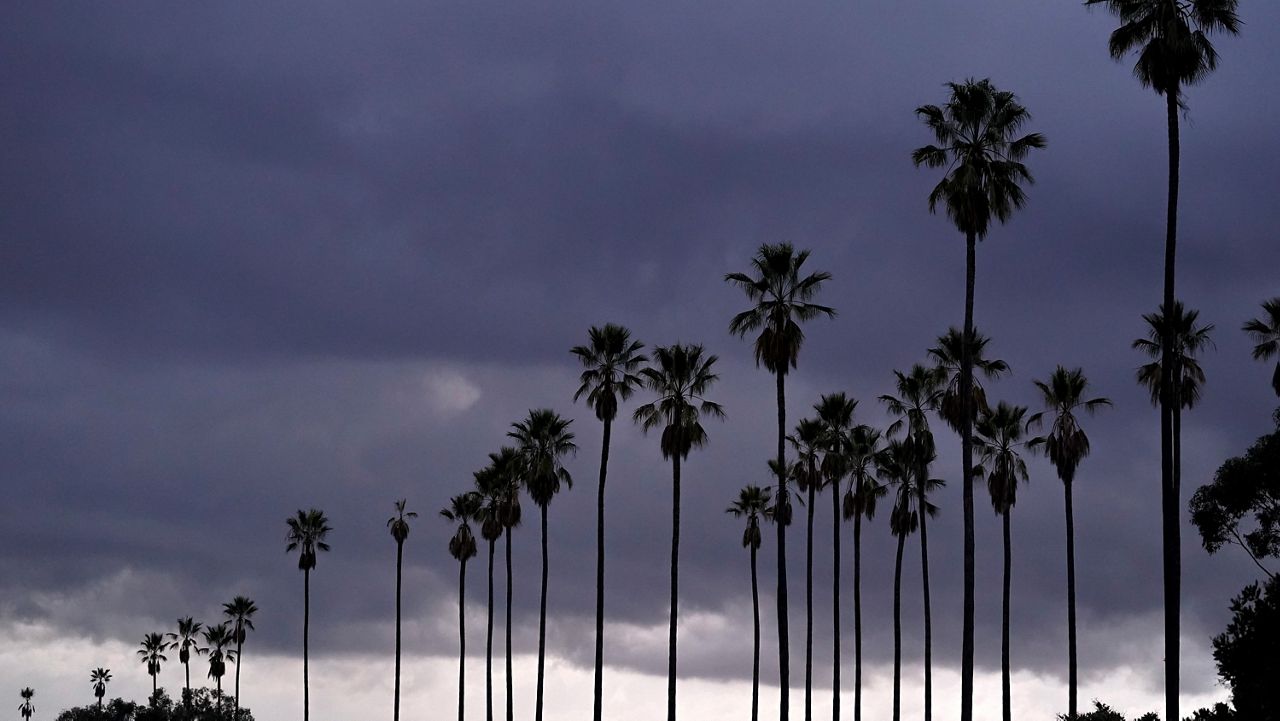LOS ANGELES — As a series of severe winter storms roll through California, it’s brought flooding and power outages. But high winds could bring another danger: downed trees.
“This is an extreme weather event, and we’re moving from extreme drought to extreme flood,” California Department of Water Resources Director Karla Nemeth said Wednesday during a winter storm response update following Gov. Newsom’s statewide emergency declaration. “What that means is a lot of our trees are stressed. After three years of intensive drought, the ground is saturated, and there is a significant chance of downed trees.”
Trees are anchored to the soil by their root systems. It’s that friction that keeps them upright, according to LA’s Urban Forestry Division Superintendent Stephen DuPrey.
“When the soil is saturated and when we have high winds, it makes the trees susceptible to failure,” said DuPrey.
If rains are steady, he said, the city doesn’t usually have many tree failures. But following three years of drought, the stage is now set.
“One thing that makes trees susceptible to failure is we’ve had drought for a number of years. The root system is very shallow on these trees because we haven’t had deep watering,” he added. “A lot of people are afraid to deep water because they think they’ll get fined.”
Trees that are less than three years old need to be watered two to four times per week with five gallons of water each time. Mature trees need to be watered one to two times per month for up to 24 hours.
As Angelenos trade their lawns for drought-tolerant landscaping, many of them have also neglected to install irrigation around their trees, he said. Artificial turf worsens the problem because the fake grass also heats the soil, further damaging trees’ roots.
About 90% of the trees in LA are on private property, according to the Urban Forestry Division. The other 10% are in parkways and other public rights of way owned and maintained by the city.
To ensure the health of trees on private property, DuPreyrecommends land owners hire a certified arborist to evaluate them for risk. Common indicators of poor tree health include leaning, splitting soil and the presence of mushrooms around a tree’s base, as well as splitting or rotting in the trunk. Construction near a tree, root pruning or a change in the grade of the soil near a tree can heighten its risk.
“If a person has a tree in their yard, they should become familiar with their tree and just observe if anything looks out of the ordinary,” said DuPrey, who recommends that trees be trimmed every three to seven years to prevent limb failures.
The majority of LA trees, he said, are not native to Southern California and are more weakened by drought than native species such as coast live oaks or Western sycamores that are better adapted.
Troubled trees in parkways can be assessed or serviced by creating a service request through MyLA311. The city can usually respond within 24 hours to emergencies such as a downed tree or fallen limb. Requests for a tree inspection are usually answered in three days.
During the current winter storm, the city has responded to 200 to 300 tree emergencies daily, DuPrey said. In times of high winds, the agency receives thousands of requests per day and coordinates with other city divisions to mobilize bucket trucks, skip loaders and tractor trailers to haul away trees, brush and debris.
California Office of Emergency Response Director Nancy Ward said Wednesday that the current winter storm is the second in a series that could continue for the next seven to 10 days and “may be one of the most challenging and impactful series of storms to touch down in California in the last five years.”
The rains that began Wednesday night in LA are the result of the third atmospheric river to descend on the state in a week. While the first two ranked between three and four on a scale of five, the current atmospheric river is a level three because there is less water vapor at a shorter duration.
The California Department of Water Resources is monitoring additional storms that could arrive this weekend and another two storms that could arrive next week, Nemeth said. “As those storms progress, as we have multiple storms in sequence, it doesn’t require the same amount of precipitation to inflict significant damage.”



